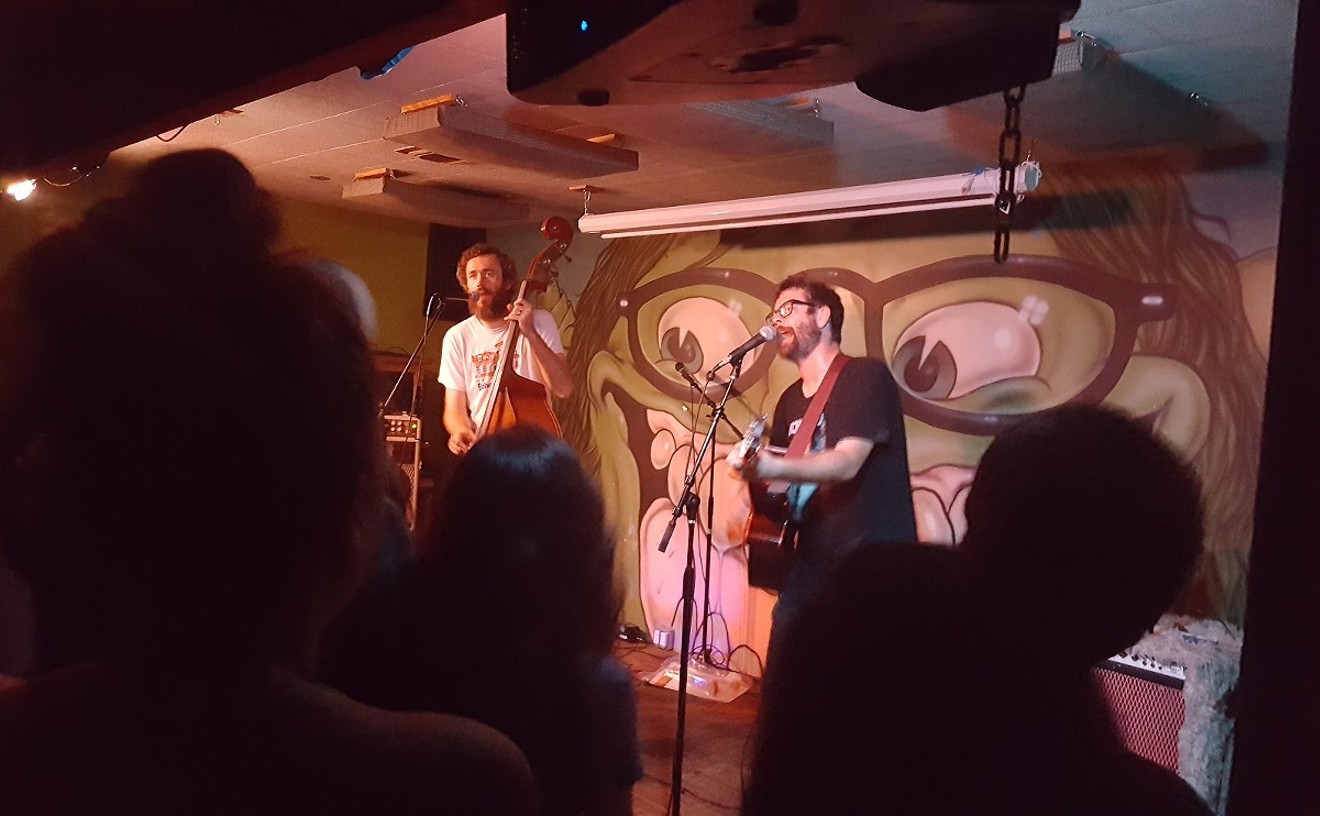"I almost died on this trip!" Rainey exclaims. In fact, the day after he returned to Phoenix in July 2001, he woke up with a high fever and in such physical pain that by 10 a.m., he had to be driven to the hospital. A day later, Rainey's lungs were so congested that he stopped breathing for four minutes. "They never found out conclusively what I had, but it had all the aspects of dengue fever," he says.
Rainey, a naturally energetic downtown Renaissance man who owns the MonOrchid building (home of the art space formerly known as Artfit) and Holga's gallery, and who publishes the bimonthly arts magazine Shade, was really wiped out by the illness. A year passed before he finally printed the shots, encouraged by his friend and mentor, photographer Keith Carter.
A near-death experience was quite a price for Rainey to pay for wanderlust. Still, the resulting black-and-white photographs are hauntingly beautiful. Like flashes of memories seared in the brain, Rainey's prints show glimpses of Africa that are poetic but not romanticized.
Many of the pictures emphasize dramatic skies, which merge with fields or bodies of water in vast horizons. Movement is palpable in a few of the blurred shots. The sun shimmers just beyond the frame or behind a cloud, lending an ethereal quality to scenes of ordinary people at work, poling boats through marshes and harvesting thick bundles of reeds.
"It wasn't like I was the first white man they'd seen," Rainey says of his subjects. "We looked for some of those secluded tribes that rarely have visitors. That wasn't my main goal, though." Instead, he tried to capture the daily lives of working Africans in a less conventional way hence his choice of a pinhole camera.
"I almost feel like a lot of people, when they make images from countries that they're visiting, they almost steal them," Rainey explains. "It's like this long lens, and you pull all this in from a distance. You're never involved." But in order to take a picture with a pinhole camera, he says, "You have to be completely engaged the medium requires not only participation but cooperation." While his subjects tried to remain still, he had to use his gut instincts to compose each shot without a viewfinder.
Rainey admits that his preconceived ideas of what Africa would be like were much different from the reality he encountered. "I didn't expect to see [that the city's influences] have crept out into the bush so much," he says. But that influence made for surprising images. "The interesting thing about photography is the least expected surroundings produce some of the most vivid results."










